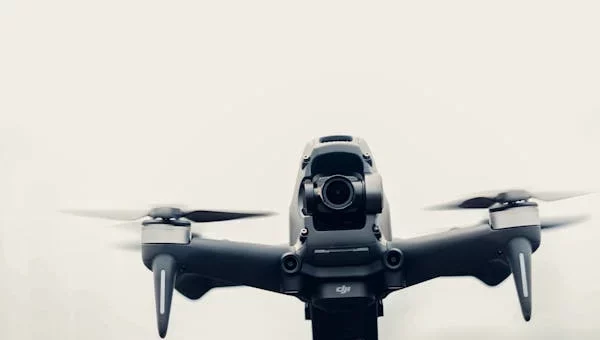
Introduction
Precision bombing has revolutionized modern warfare, allowing militaries to strike targets with exceptional accuracy while minimizing collateral damage. Modern attack aircraft leverage advanced navigation, targeting systems, and guided munitions to deliver pinpoint strikes that are decisive on the battlefield.
This comprehensive article explores precision bombing, covering its history, technologies, tactics, weaponry, and future trends, providing insights into how modern attack aircraft execute precise aerial strikes.
1. Introduction to Precision Bombing
1.1 What is Precision Bombing?
Precision bombing refers to the use of advanced technologies and tactics to accurately hit specific targets with minimal unintended damage. Unlike carpet bombing, which blankets large areas, precision bombing focuses on striking critical infrastructure, enemy forces, or strategic assets.
The goal is to:
-
Maximize mission effectiveness
-
Reduce civilian casualties and collateral damage
-
Enhance operational efficiency by limiting resource use
1.2 Historical Evolution
Early bombing campaigns in World War I and II involved unguided bombs with limited accuracy. The advent of radar, lasers, GPS, and guided munitions in the late 20th century transformed bombing into a precise science.
2. Modern Attack Aircraft and Their Roles
2.1 Types of Modern Attack Aircraft
Modern attack aircraft include dedicated strike fighters, multirole fighters, and specialized ground-attack planes, designed or adapted for precision bombing missions.
Examples:
-
F-35 Lightning II: Stealth multirole fighter with advanced sensor fusion and precision strike capability.
-
A-10 Thunderbolt II: Known for close air support and precision attacks on ground targets.
-
Su-34 Fullback: Russian strike fighter capable of precision bombing with advanced avionics.
2.2 Mission Profiles
Precision bombing missions vary depending on the target type and threat environment. Common profiles include:
-
Close Air Support (CAS): Supporting ground troops with accurate strikes on enemy positions.
-
Strategic Strikes: Targeting enemy infrastructure, command centers, and supply lines.
-
Suppression of Enemy Air Defenses (SEAD): Destroying air defense systems to enable safe air operations.
3. Technologies Enabling Precision Bombing
3.1 Guidance Systems
Modern precision bombing relies heavily on guided munitions equipped with several guidance technologies:
-
GPS/INS Guidance: Combines satellite navigation with inertial navigation for high accuracy.
-
Laser Guidance: Uses laser designators to “paint” targets, guiding bombs via reflected laser energy.
-
Infrared Guidance: Homes in on heat signatures for targeting moving or concealed assets.
3.2 Targeting Pods and Sensors
Attack aircraft use targeting pods equipped with cameras, lasers, and sensors to identify, track, and designate targets.
Key pods include:
-
Sniper XR
-
LITENING targeting pod
These systems provide real-time imaging and laser designation to improve strike accuracy.
4. Precision-Guided Munitions (PGMs)
4.1 Types of PGMs
Various guided bombs and missiles are used for precision bombing, including:
-
JDAM (Joint Direct Attack Munition): GPS-guided bomb kits converting unguided bombs into precision weapons.
-
Paveway Series: Laser-guided bombs with proven effectiveness since Vietnam War.
-
Small Diameter Bomb (SDB): Lightweight precision bomb allowing multiple weapons per sortie.
4.2 Comparison Table of Popular PGMs
| Munition | Guidance Type | Weight (lbs) | Range (km) | Typical Use |
|---|---|---|---|---|
| JDAM | GPS/INS | 500-2000 | Up to 15 | All-weather precision strikes |
| Paveway II/III | Laser-guided | 500-2000 | Line of sight | Target designation via laser |
| Small Diameter Bomb | GPS/INS | 250 | 60+ | Multiple target engagement |
5. Tactics and Challenges in Precision Bombing
5.1 Planning and Execution
Precision bombing requires meticulous mission planning involving intelligence, weather analysis, and threat assessment. Pilots coordinate with ground forces and command centers to confirm targets and minimize risks.
5.2 Countermeasures and Obstacles
Adversaries use camouflage, decoys, electronic warfare, and mobile targets to evade precision strikes. Weather conditions like fog or sandstorms can also degrade targeting effectiveness.
5.3 Role of Unmanned Aerial Vehicles (UAVs)
Drones are increasingly integrated to provide persistent surveillance and laser designation, enhancing precision bombing effectiveness while reducing risk to pilots.
Conclusion: Precision Bombing’s Transformative Impact on Modern Warfare
Precision bombing with modern attack aircraft represents a leap forward in military capability, blending technology and tactics to deliver decisive results with minimal collateral damage. As advancements in sensors, AI, and weapons continue, the future promises even greater accuracy and efficiency.
How do you see precision bombing shaping the future of aerial combat? Share your thoughts and experiences as we explore the evolving battlefield together.